Travelling Fermenter: The Global Impact of Miso-Making
Apr 19,2018
Travelling Fermenter: The Global Impact of Miso-Making
Apr 19,2018
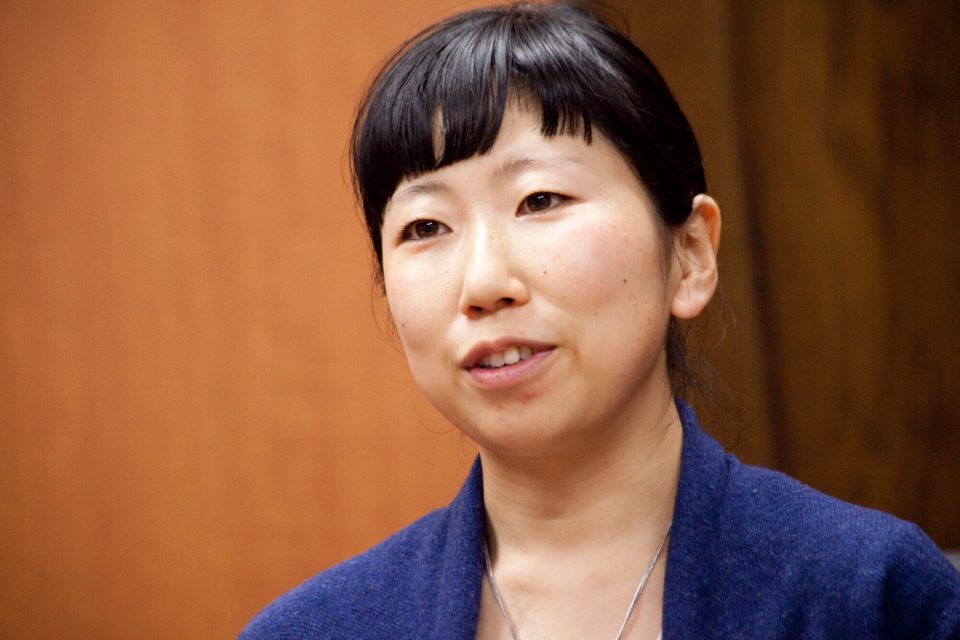

Terajima Akane has been captivated by the intrinsic fun of making miso since she began in 2011. Inspired by this passion, she holds miso-making workshops in a variety of locations, both in Japan and abroad, to promote the deliciousness of homemade miso.
Terajima has made it her life’s work to popularize making miso, dubbing her activities the Miso-no-Wa [Miso Circle] Project and calling herself the Travelling Fermenter. We spoke with her about her deep passion for miso and her lifestyle as a Travelling Fermenter.
“I started getting interested in food and diets around 2009. I studied organic and macrobiotic foods as well as nutritional science. I’ve always been interested in miso since then, and naturally I ate miso soup every day, trying out all kinds of recipes.”
Miso became an integral part of her life, to the point that she admits with a laugh: “I was consuming about a kilogram of miso every month.” The turning point that brought her, already a miso fan, even closer to miso occurred in 2011. Intrigued by a friend who told her about making miso by hand, she decided to try making miso herself.
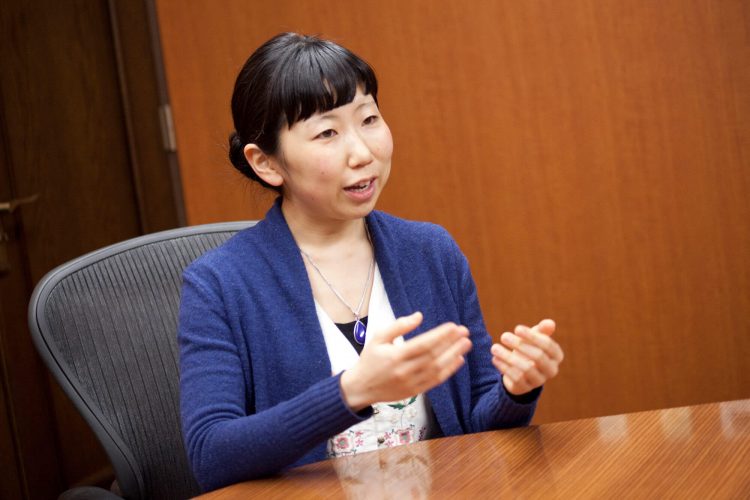
“My interest was piqued when I discovered I could make my own miso. I prepared a batch of miso for the first time in February 2011. But that year turned into a year of heartbreak, with the Great East Japan Earthquake, the passing of my aunt, and a very tough breakup. I had completely forgotten about the batch of miso until the fall, when I suddenly remembered it. I opened up the tub and found I had made an incredibly tasty miso. I can still recall just how surprised and amazed I was.”
Fueled by that surprise and amazement, Terajima wanted to tell her friends about the joy of making miso. She gathered some friends and acquaintances at a friend’s shared house and demonstrated how to make miso. Seeing that everyone was thrilled by the experience, she became thoroughly infatuated with miso-making. Not long after, she got a request from a couple she had just met who own the Hakko Guesthouse 「Miminichi」in Kamakura and started holding miso-making classes at the guesthouse.
Terajima, who had been teaching miso-making at Miminichi and other venues, visited the small town of Totnes in the south of England in 2014, where she was very pleasantly surprised by how interested the townsfolk were in food. This inspired her to teach miso-making abroad.
“I had quit my job and gone to England to learn English. Totnes is a small town with a population of around 6,000 people. It is called a transition town, a place where the concept has taken root to build a better society by changing the way the residents live, rather than leaving local problems to others or to the government.
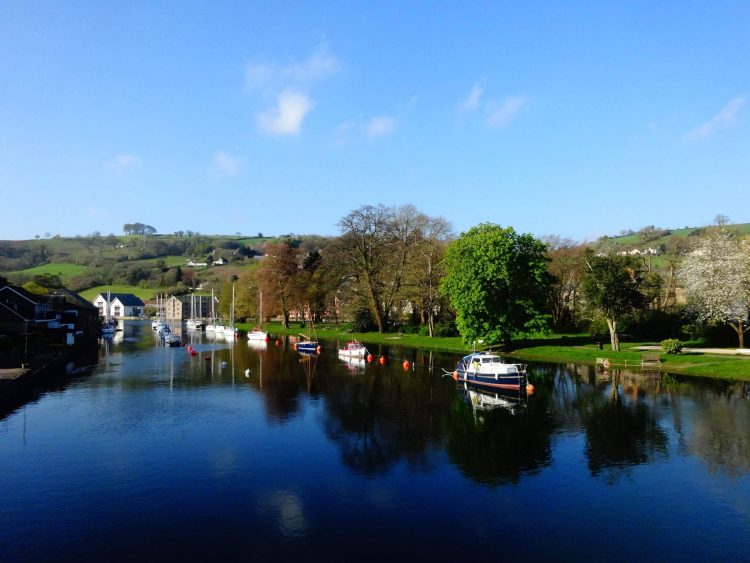
Totnes, a small town in England
The people of Totnes are very conscious about their food, many of whom are vegetarians, grow their own vegetables, and gather ingredients by foraging. Their lifestyle — where it is natural to harvest what they will eat for the day’s dinner from the surrounding fields and woodlands and where people help each other in farming projects and share among themselves without exchanging money — was extremely eye-opening for me, who grew up in Tokyo’s concrete jungle. One day, I was blessed with the opportunity to demonstrate miso-making to my friends in town. In return, they taught me their home-cooking. This form of skill-sharing experience was very novel and fun.”

(Left) Dishes brought by Totnes residents to a dinner party
(Right) A miso-making class where a miso dragon suddenly appeared
Terajima, now awake to the thrill of travel after a year in Totnes, began traveling to experience how people live in other places. After England, she went to New Zealand in 2015 on a working holiday permit, and in 2016, she made her way to Norway. She also began participating in the WWOOF project and experienced farm stays at several organic farms.

Preparing for a miso-making workshop in Westport, New Zealand. It seems koji [malted rice] is available overseas.
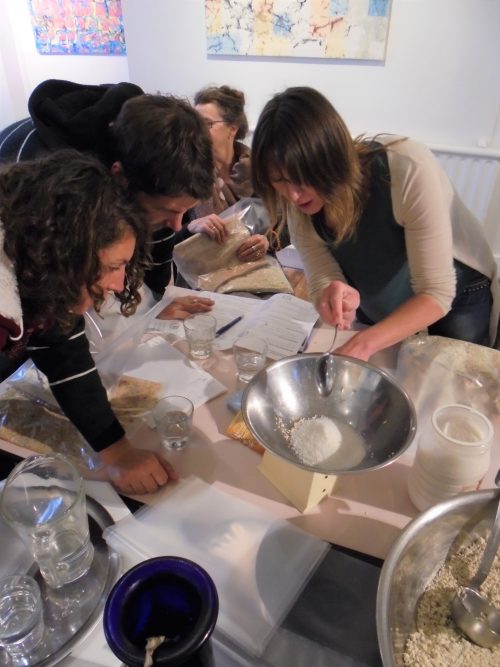
Making miso in Westport. All the students are very keen!
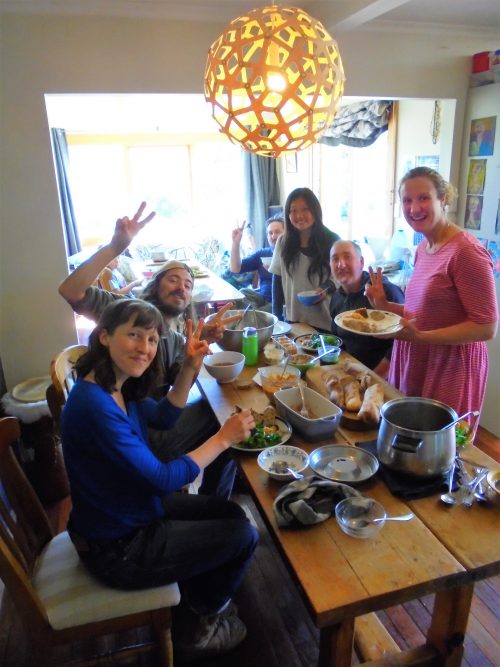
Miso friends in Wanaka, New Zealand
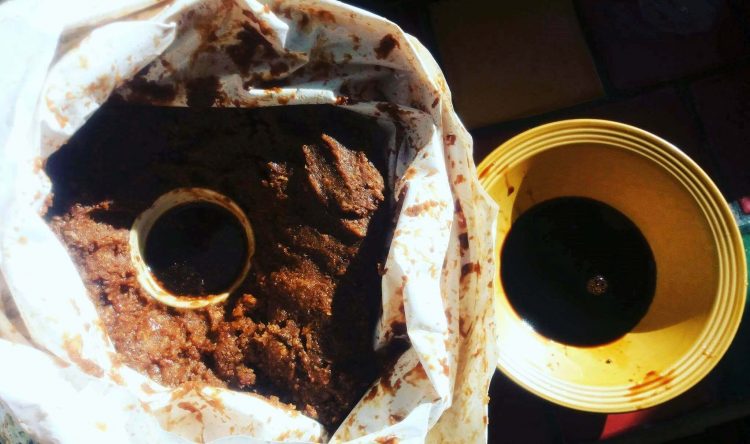
Miso made in Wanaka
“The WWOOF Project is about visiting and living in places where people lead organic lifestyles and helping them with their work. I was able to experience miso-making with local people while living at different homes. In Norway, I tried making miso with chickpeas instead of soybeans, but I made a bit too much. Luckily, I was able to return in 2017 when the miso had fermented just the right amount, so I sold the chickpea miso and miso soup at local farmers’ markets. The WWOOF members who had made the miso with me helped me in every way, from arranging a tent to following through on my ideas. I set up a stall five times and some customers came back several times.”
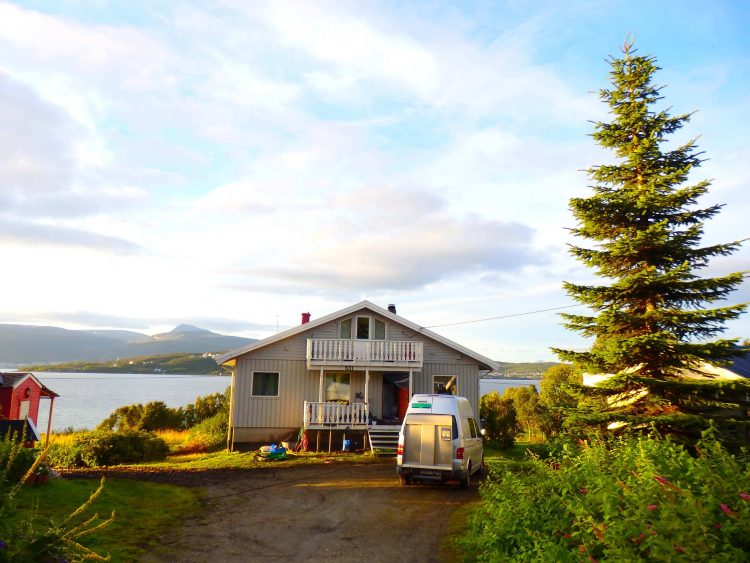
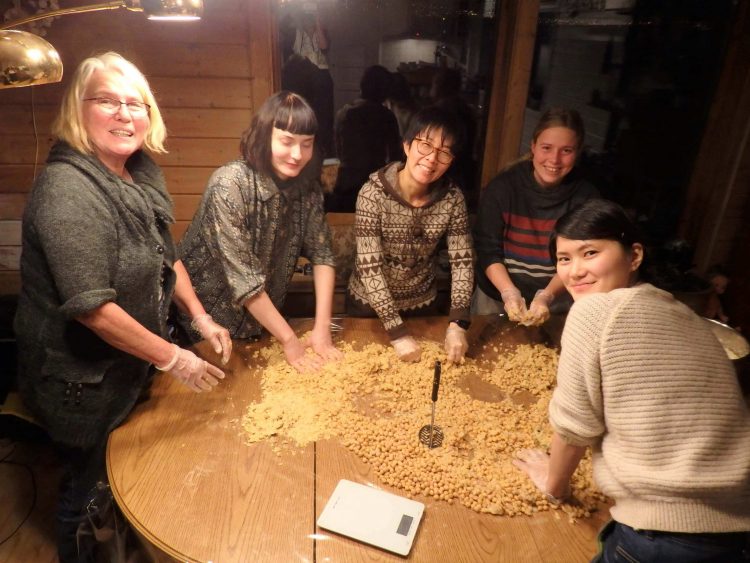
Making miso in Tromsø, Norway
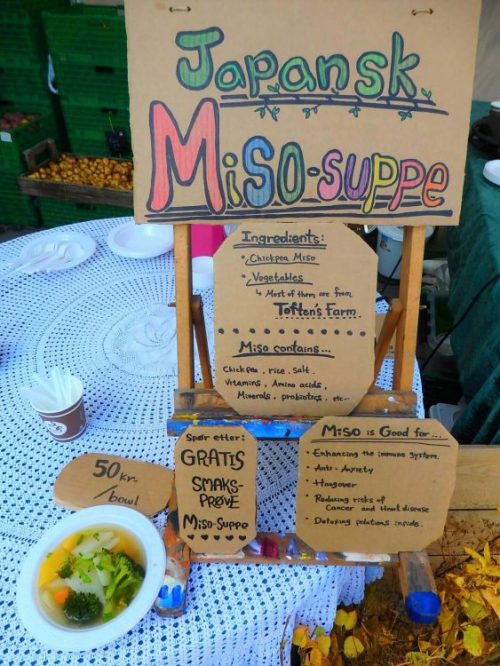
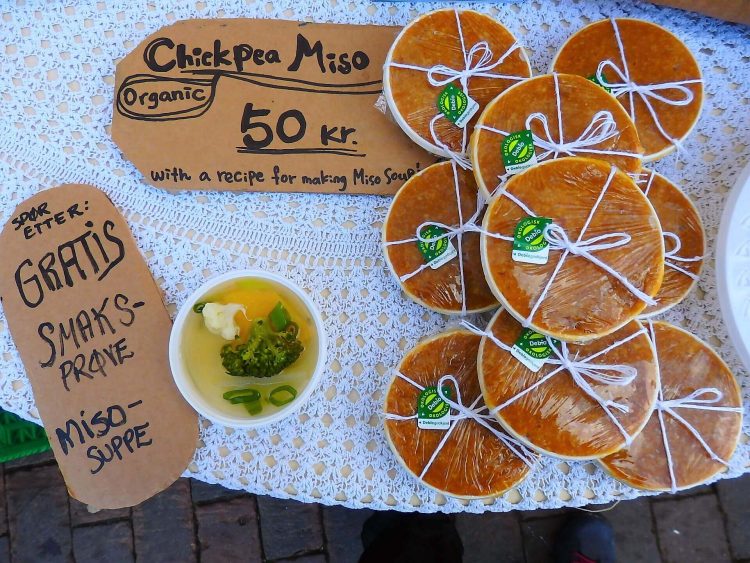
Selling miso and miso soup made with chickpeas at a farmers’ market in Tromsø
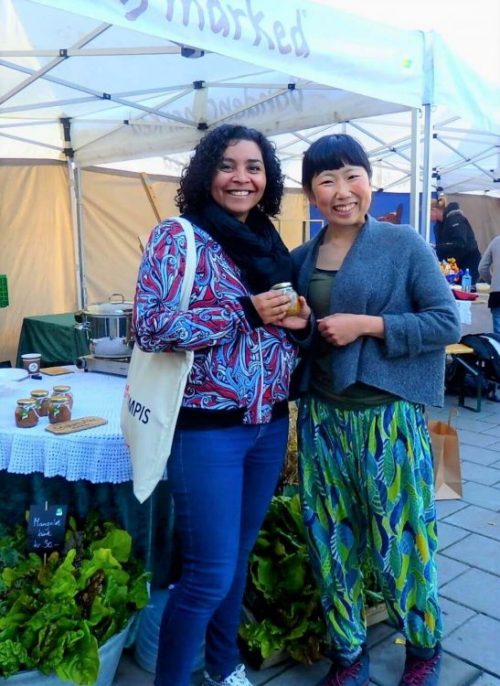
A local Tromsø resident who bought some miso and is still Terajima’s friend
In this way, Terajima has been expanding her network day by day. As of March 2018, she has held workshops in Germany, Switzerland, and Hong Kong, as well as England, New Zealand, and Norway. She travels overseas once or twice a year to promote making miso.
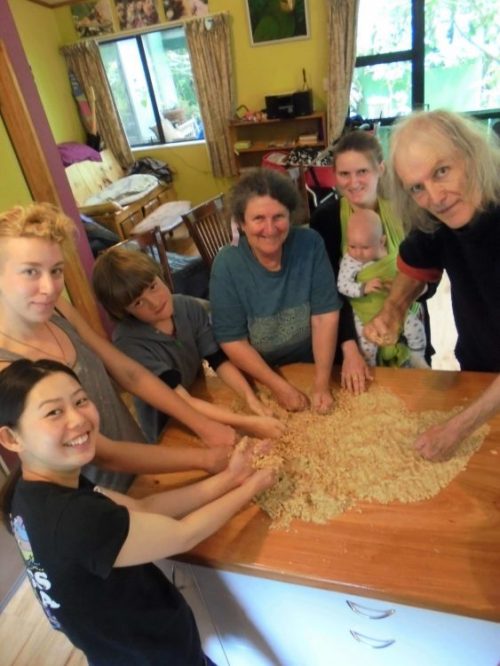

Making miso in Warkworth, New Zealand in 2015
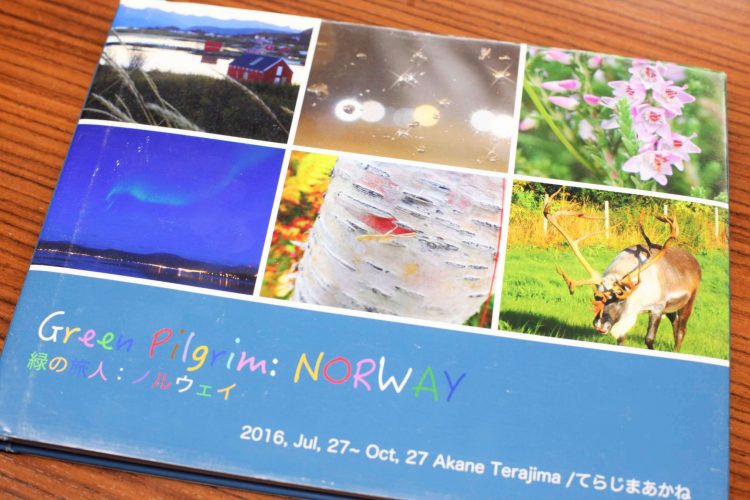
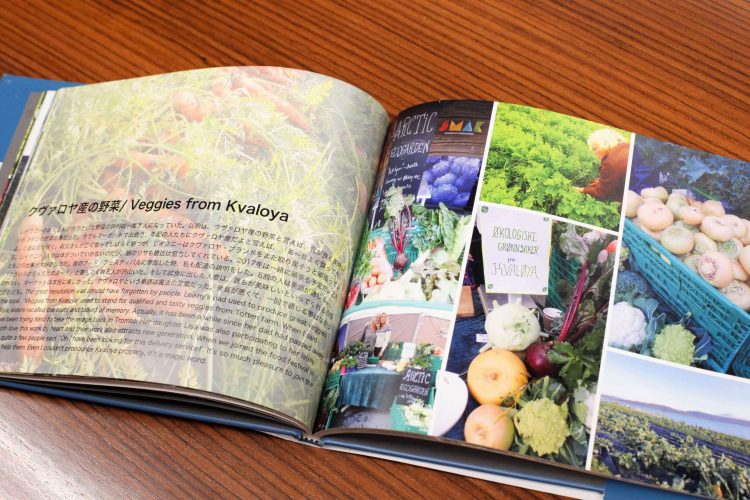
Terajima has compiled the photos she took on visits overseas into a photo book. Episodes from each trip are written in Japanese and English along with photos.
Even as she works energetically to spread the word about making miso in Japan and abroad, Terajima spoke about her current dream to have miso placed in emergency shelters throughout Japan as an emergency food ration in preparation for disasters, which are an inevitable part of life in the country. As a step toward this goal, when the Kumamoto earthquake struck in 2016, she personally raised enough funds to purchase 100 kilograms of miso, which she donated to a local volunteer group. The miso, served at evacuation centers and local events, was greatly appreciated.
“The plan began with the idea of giving people delicious miso to eat at the very time when they need to be energetic to move forward with the recovery. I fantasize about a future where people make miso with others in their community and have the miso stockpiled at emergency shelters in preparation for disasters to come or have homemade miso added to the emergency rations that Self-Defense Forces personnel carry. And even if no earthquakes occur, you would have still practiced cooking together and you can eat the miso as miso suiton [miso soup with flour dumplings]. I’m looking for enthusiastic people who want to help me in this project.” [laughs]
Terajima adds she hopes that when procuring the miso to be used for these scenarios, people are discerning about choosing produce from farmers and companies that think about Japan’s future.
“I have always thought that all shopping, not just miso, is a way of voting. If I am going to use my money, I will select and buy produce from domestic farmers and companies that I like. Doing so gives these people capital and keeps the money in circulation within Japan. I buy products that are imbued with a sense of encouragement — that tell you to keep on striving to do your best. I want to spread this idea, together with emergency miso, and I intend to continue my activities step by step.”
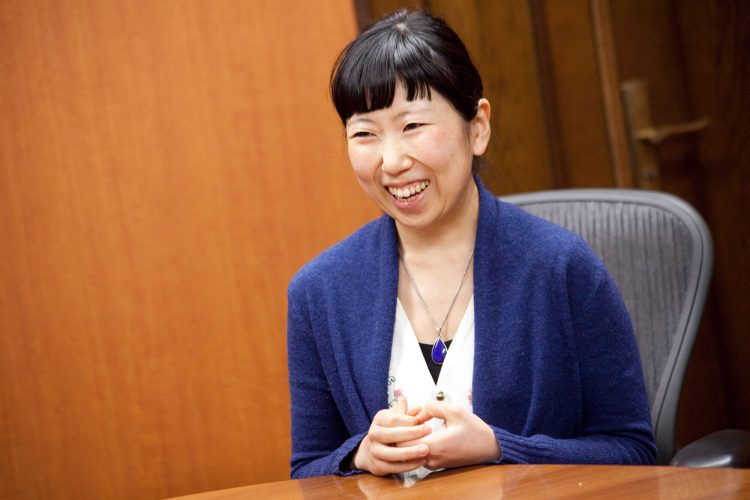
When asked “What has pleased you the most through your activities to promote making miso?”, Terajima replied “When the outcomes don’t end with just making miso.”
“For example, when people take miso made in one of my workshops and serve it to their family who enjoy it, or when people who made miso last year at a workshop and this year tried making it on their own, or when people try making miso with their friends. I’m so happy when I hear stories like these. The instant I truly feel the Miso-no-wa is spreading, creating new communications and culture. The foundation of my aspirations is that by fostering these actions, we can create a better society. What I’m doing now in my activities is sowing the seeds.”
She also makes a point of emphasizing that fermentation, which is necessary to make miso, has important lessons for human activities.
“One thing I often say in my workshops is ‘Good luck with your fermentation magic, everyone’. Fermentation, at its essence, is about taking something that exists and making it even better. For example, soybeans are easier to digest and more nutritious once made into miso than eating them raw. That is the wonder of fermentation. In the same way, my message is to use what you have inside you to make your life better and more enjoyable.”
※All travel photos are copyright © Terajima Akane
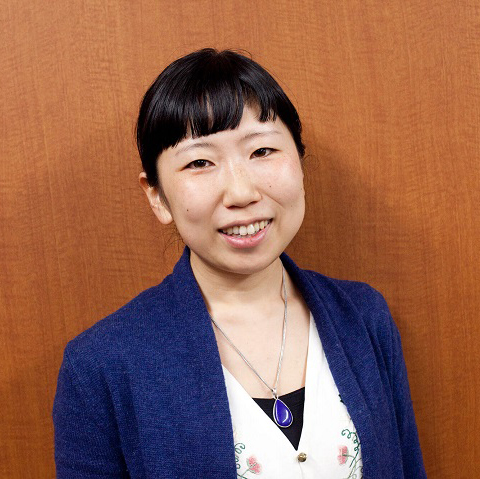
The Travelling Fermenter / Miso-no-Wa Project Director
The Travelling Fermenter / Miso-no-Wa Project Director
Born in Tokyo in 1986, Terajima quit her office job in 2014 and went to England to study English. In England, she was influenced by the thinker Satish Kumar and assimilated ideas to make society better. To experience the philosophy she gained, she traveled to Europe, Scandinavia, and New Zealand to visit eco-communities, people who live on the land, and people who care about the planet. In her travels and in Japan, she shares the joys of miso-making, while also endeavoring to make miso an emergency ration.
Terajima writes about her travels and fermentation on her blog Travelling Fermenter.